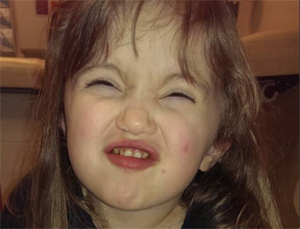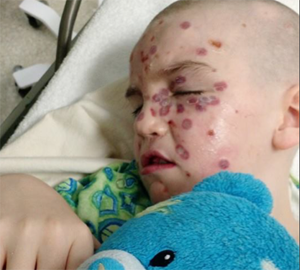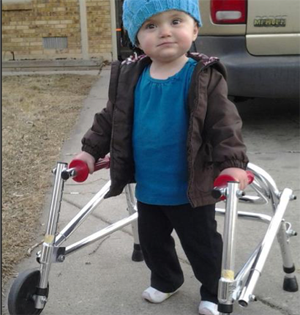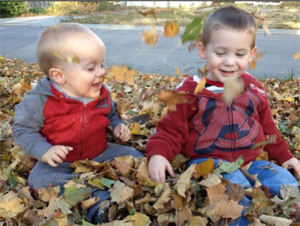More than two-thirds of people diagnosed with Gorlin syndrome have a family history of the disease. If a child has one parent with the condition, the odds are 50/50 that the child will also have Gorlin syndrome.
At birth, infants may have features that are characteristic of Gorlin syndrome. These include a larger than normal head size (macrocephaly), prominent forehead (frontal bossing), wide-spaced eyes (hypertelorism), and/or milia below the eyes or on the forehead

Early diagnosis of Gorlin syndrome is important.
Infants and young children with Gorlin syndrome may also be born with cleft palate or cleft lip. There may be problems with the eyes, including very small eyes (microphthalmia), cataracts, rapid involuntary eye movements (nystagmus), missing tissue from the iris or retina (coloboma) and/or crossed eyes (strabismus).
Early diagnosis of Gorlin syndrome is important, especially to monitor and treat BCCs and other abnormal growths. As with adults, Gorlin syndrome is diagnosed in children when the child has at least two major criteria of the condition and one minor, or one major criterion and at least three minor criteria.
Of the 100 or so signs and symptoms of Gorlin syndrome, some are present at birth (congenital), and some develop in childhood and continue through to adulthood.
Read more about the signs and symptoms of Gorlin syndrome.

Multiple basal cell carcinomas prior to age 30 are one of the most common symptoms of Gorlin syndrome.
Though many of the signs and symptoms of Gorlin syndrome generally do not cause problems for overall health, children with
the condition should have their symptoms regularly monitored by the appropriate health care provider.
Tests to monitor symptoms in children with Gorlin syndrome include:
The child’s health care provider team along with parents/caregivers and the child him or herself should determine the surveillance schedule depending on the presence and severity of symptoms.
Read more about recommended surveillance of Gorlin syndrome symptoms.
Many children with Gorlin syndrome have some delay in motor skill development. However, according to the U.S. National Institutes of Health (NIH), most of them catch up by age 5.

Children with Gorlin syndrome may need therapy to reach certain developmental milestone.
Perhaps most challenging for a child with Gorlin syndrome is the physical impact of the disease. Being “different” from his or her peers or siblings can contribute to feelings of anxiety, stress, frustration and sadness in children with Gorlin syndrome.
The American Academy of Pediatrics recommends the following to help your child cope with the challenges of living with Gorlin syndrome:
For school-aged children, it’s a good idea to meet and talk with the teacher about Gorlin syndrome at the start of the school year. A teacher who understands Gorlin syndrome can be a valuable partner to help your child cope in school.
Some children with Gorlin syndrome may benefit from an Individualized Education Plan (IEP) or a 504 plan. Learn the difference between the two and which one you may need.

Yours is a child first and a child with Gorlin syndrome second.
Feelings of depression, sadness and anxiety, are common in people with chronic disease. According to the National Institute of Mental Health (NIMH), people with chronic medical conditions — such as Gorlin syndrome — are at higher risk of developing depression than those who don’t face serious health issues.
The NIMH states, “It is common to feel sad or discouraged after [your diagnosis] … It may be hard to adapt to a new reality and to cope with the changes and ongoing treatment that come with the diagnosis.”
Temporary feelings of sadness are expected, but if these feelings last longer then a couple of weeks, your child may have depression or another mental health issue.
According to the NIMH, symptoms of depression include:
If your child has been experiencing two or more of these symptoms for two weeks or longer, it may be time to talk to a trained professional about these feelings.
The information below is for general informational purposes only. The Gorlin Syndrome Alliance makes no representation or warranty, express or implied. Your use of the services below is solely at your own risk. The links below are to third party content, which the GSA does not warrant, endorse, or assume liability for. The GSA does not receive remuneration for sharing these links.